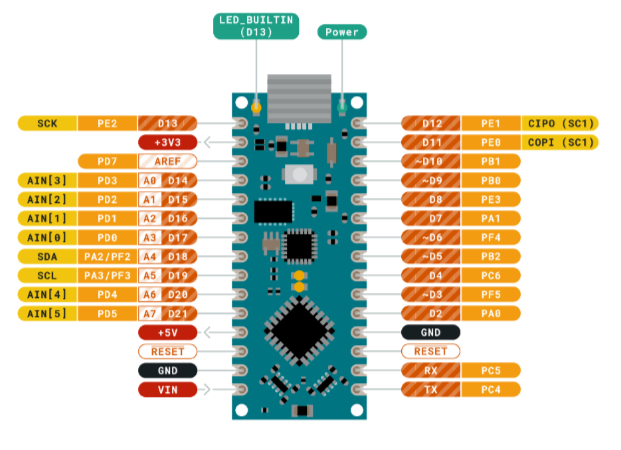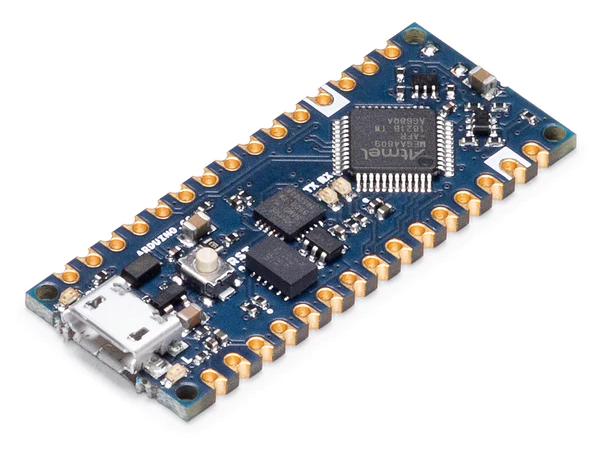Arduino’s Nano Every board features 5-Volt logic and a compact form factor of just 45 x 18 mm, with a weight of just 5 grams. The board can be mounted via headers, the 4x mounting holes (screws not included), or directly soldered to a larger PCB thanks to its castellated, single-sided design. This makes it an ideal programmable control solution for compact products such as wearable inventions, miniature robotics, and more.
While it is known more for its use in maker applications, Arduino’s Nano Every serves as a gateway to embedded design for professional non-embedded electronics design engineers looking for an easy way to implement programmable control in their designs. The board and its functionality can be configured via Arduino IDE using the standard Arduino C++ programming language, which has ample support for developing your project.
For those already familiar with Arduino, the Nano Every is fully pin- and code-compatible with the original Nano board but features a lower price-tag, a micro-USB port for programming, and a more powerful ATMega4809 Advanced Virtual RISC (AVR) 8-bit MCU running at up to 20 MHz. This is supported by 6 kB SRAM, 48 kB flash, and 256 B EEPROM. An ATSAMD11D14A ARM Cortex M0+ processor acts as a bridge between the USB interface and the main AVR processor.

As shown in the diagram above, the Nano Every board features 30 pins that include the following control and interfacing options:
- 22x digital I/O pins at 5 V (14 dedicated)
- 8x analogue input pins at 5 V (10-bit resolution)
- 5x PWM pins (from digital pins)
- UART, I2C (from 2x analogue pins), and SPI interfaces
- +5 V and +3.3 V pins for reference or powering external devices
- 2x GND and Reset pins
- 2x LEDs: One to indicate power to the device and one user LED
- A reset button
The Arduino Nano Every can be powered via the micro-USB port or 7-21 V to the VIN pin. This wide operating voltage allows its use in many systems without the requirement for additional voltage conversion, making it a time-saving solution for bringing products to market. At 15 mA per I/O pin, the power consumption of the device is highly dependant on how you intend to use the board, but it is certainly suitable for use in battery-operated projects.
For the full specification of the device, please consult this official datasheet.
Arduino’s Nano Every is a bare-bones board for control applications, but other boards in Arduino’s Nano range feature functionality that includes onboard connectivity, sensors, and more. If this is required for your application, such as for remote-operated drones, state this when applying to evaluate the technology using the form below, and ipXchange will recommend an alternative Nano board for your commercial project. That said, not all Nano boards operate on 5-Volt logic with such a wide power supply range, so this must be taken into account when making your application.
(All images sourced from Arduino)


